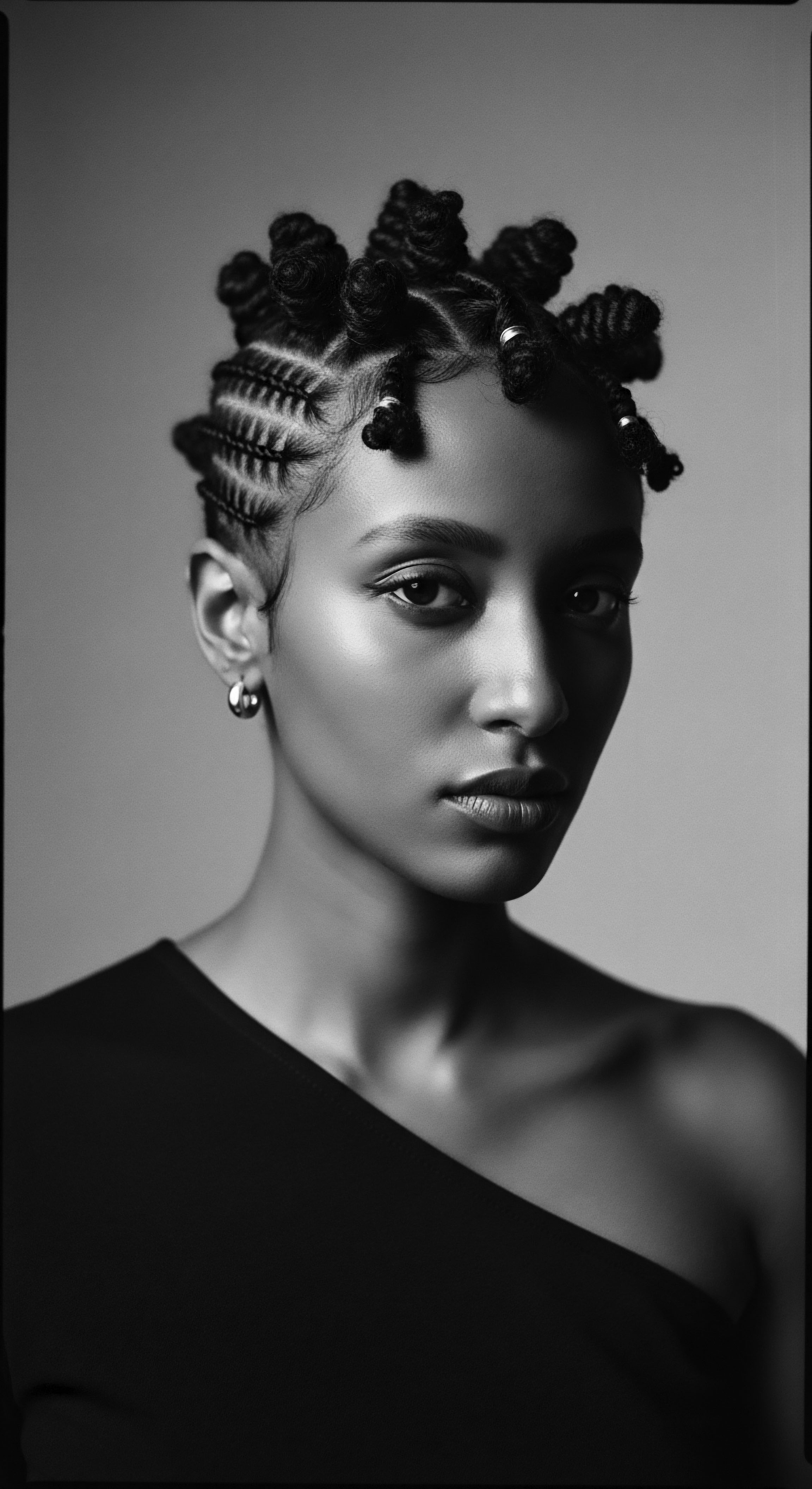
Roots
To journey into the heart of textured hair is to trace ancestral lines, to honor the whispers of ages past that speak of a profound connection between our strands and the very essence of existence. We are invited to consider not simply the question, “Can ancient hair oiling rituals truly shield textured strands from environmental challenges?” but rather, how these venerable practices stand as living archives, guiding us through a heritage of resilience and beauty. This is a conversation with the past, where the wisdom of our forebears, particularly those with deep roots in African and diasporic traditions, offers timeless insights for the care of hair that dances with coil and curl.
The very structure of textured hair, with its unique bends and twists, offers both magnificent beauty and a particular vulnerability. Its coiled architecture, while allowing for styles of incredible artistry and expressive range, means that its natural oils, the very sustenance from the scalp, travel a longer, more circuitous route down the hair shaft. This inherent characteristic often results in drier strands, a condition exacerbated by the world’s varying climates and elements. Understanding this elemental biology, passed down through generations of tactile knowledge, lays the groundwork for appreciating why ancestral practices, especially hair oiling, held such immense protective power.
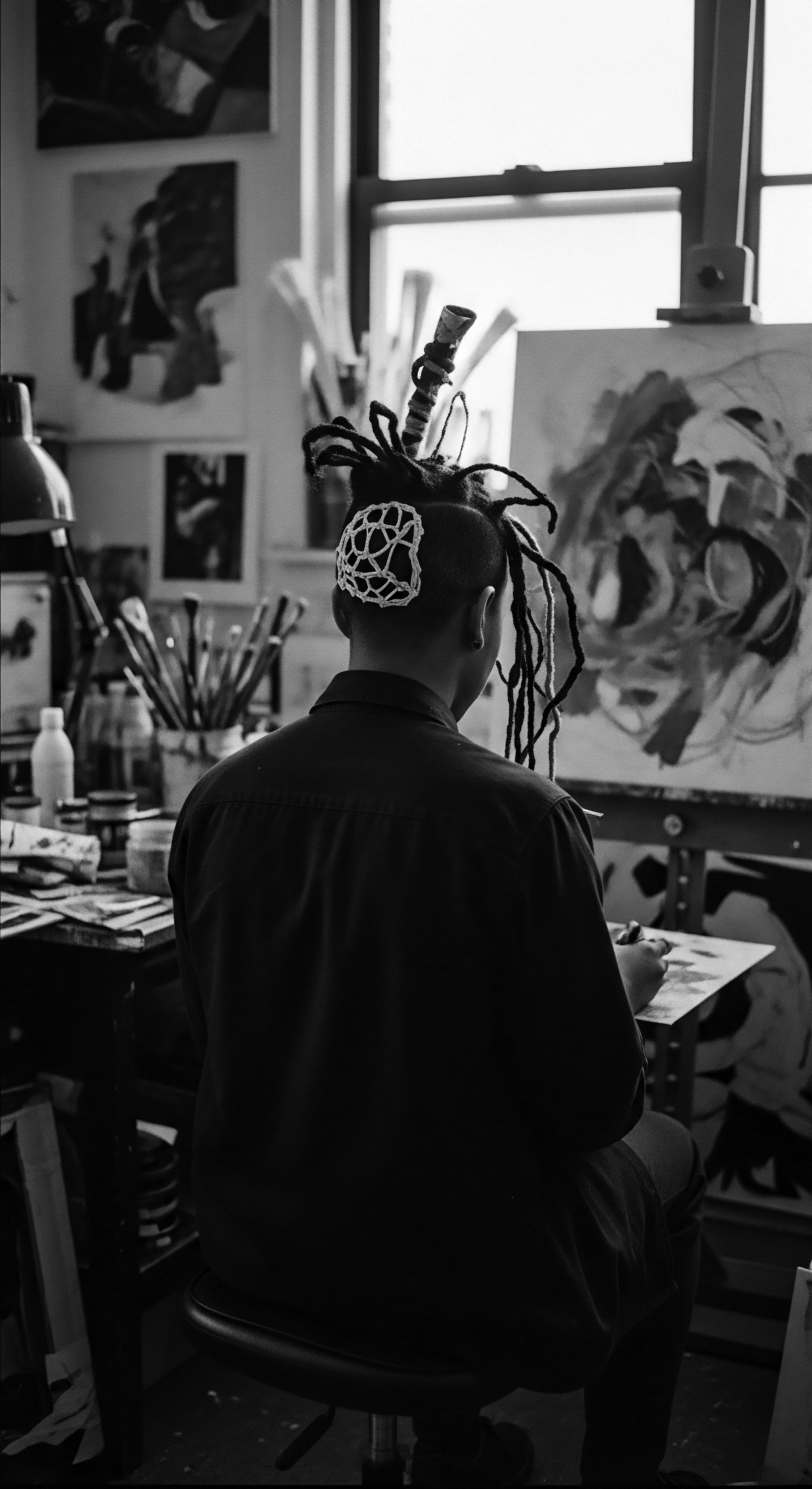
Hair’s Ancestral Architecture
The anatomy of textured hair, viewed through both ancient wisdom and modern science, reveals a masterful design. From the tight coils of West Africa to the wavy patterns of the diaspora, each strand carries a story. The shape of the follicle determines the hair’s curl pattern; a flatter, elliptical follicle produces curlier hair, while a rounder one gives straighter strands.
This distinction dictates how natural sebum distributes along the hair, with curlier hair often experiencing less even coating and thus, greater propensity for dryness. This fundamental difference made external lubrication, through oils and butters, not merely a cosmetic choice but a biological necessity for scalp and strand health.
In many African societies, hair was regarded as the highest point on the body, a conduit to the divine and a reflection of one’s identity. Hairstyles communicated marital status, age, wealth, and tribal affiliation. This reverence extended to its care, where meticulous routines ensured its vitality.
The Yoruba of Nigeria, for example, considered hair a source of spiritual power, with braided styles used to send messages to the gods. This deep spiritual connection informed their comprehensive hair care, which included washing, combing, oiling, and braiding, often in communal settings (Mbilishaka, 2018a).
The legacy of textured hair care, born of necessity and spiritual reverence, holds wisdom for today’s environmental challenges.

Language and Lineage in Hair Classification
While modern trichology offers classifications like Type 3C or 4A, the ancestral lexicon for hair was rooted in observation of its growth patterns, its feel, and its response to the environment. These distinctions, often tied to specific ethnic groups or regions, were not abstract but lived, practical markers for care. The way hair behaved under the scorching sun or in humid air informed the choice of natural emollients.
Consider the term Kinky, sometimes viewed negatively in modern contexts, yet historically, it described the tightly coiled hair common among groups like the Mandingo, indicating a hair type that, while prone to shrinkage, also possessed a unique strength and ability to hold intricate styles. This inherent strength, however, required consistent moisture. The traditional understanding was not about altering the curl, but about nourishing it, allowing its true nature to flourish.
| Aspect of Hair Curl Pattern |
| Ancestral Understanding (Heritage Context) Visual marker of tribal identity, age, social status; dictates traditional styling. |
| Contemporary Scientific Insight Follicle shape (elliptical vs. round) determines curl; impacts sebum distribution. |
| Aspect of Hair Oiling Necessity |
| Ancestral Understanding (Heritage Context) Ritual for protection, spiritual connection, and aesthetic enhancement against harsh elements. |
| Contemporary Scientific Insight Provides external lipids, seals moisture, protects cuticle from environmental stressors. |
| Aspect of Hair Environmental Shielding |
| Ancestral Understanding (Heritage Context) Natural butters and oils as barriers against sun, dust, and drying winds. |
| Contemporary Scientific Insight Oils offer UV protection (mild SPF), reduce particulate adhesion, mitigate frizz from humidity. |
| Aspect of Hair The continuity of understanding across time reinforces the power of ancestral practices for textured hair vitality. |
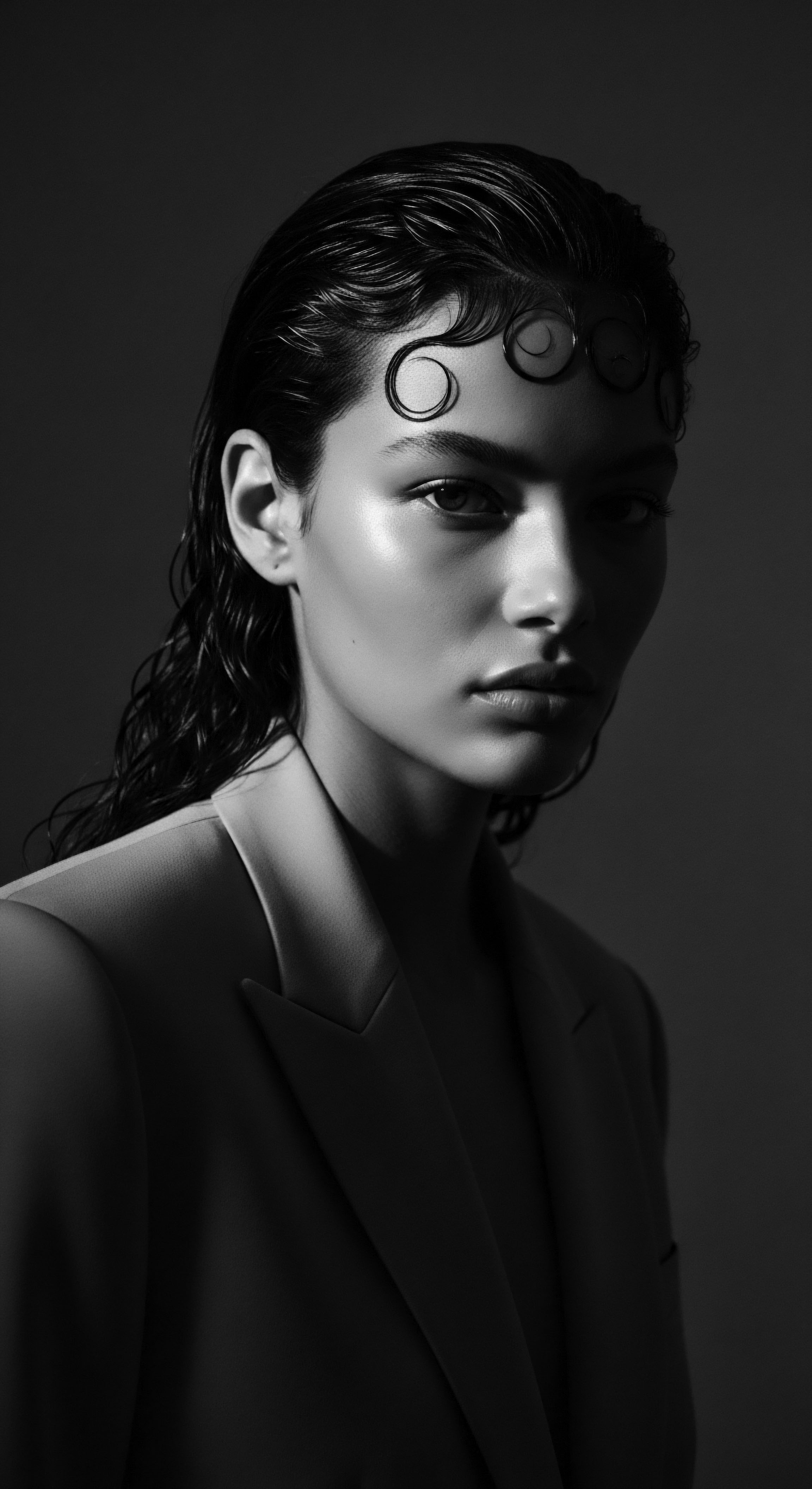
Hair Growth Cycles and Elemental Influences
The cycles of hair growth, too, were observed through generations, influencing when and how certain treatments were applied. While modern science speaks of anagen, catagen, and telogen phases, ancestral practices recognized periods of growth, rest, and shedding. Hair was understood as a living entity, responsive to diet, spiritual well-being, and environmental conditions.
Hot, dry climates, prevalent in many ancestral African lands, presented significant challenges. UV radiation, air pollution, and fluctuating humidity levels are timeless adversaries for hair health.
Natural oils and butters, such as Shea Butter and Palm Kernel Oil, common in West Africa, were not merely applied; they were massaged into the scalp and strands as a shield. Shea butter, often called “women’s gold,” was used for centuries to protect hair from sun, wind, and dust (Diop, as cited in). Its presence in ancient Egyptian beauty secrets, where Cleopatra reportedly had it sent from Africa to protect her hair and skin from desert travel, underscores its enduring efficacy. These historical uses highlight a profound, intuitive understanding of environmental protection.
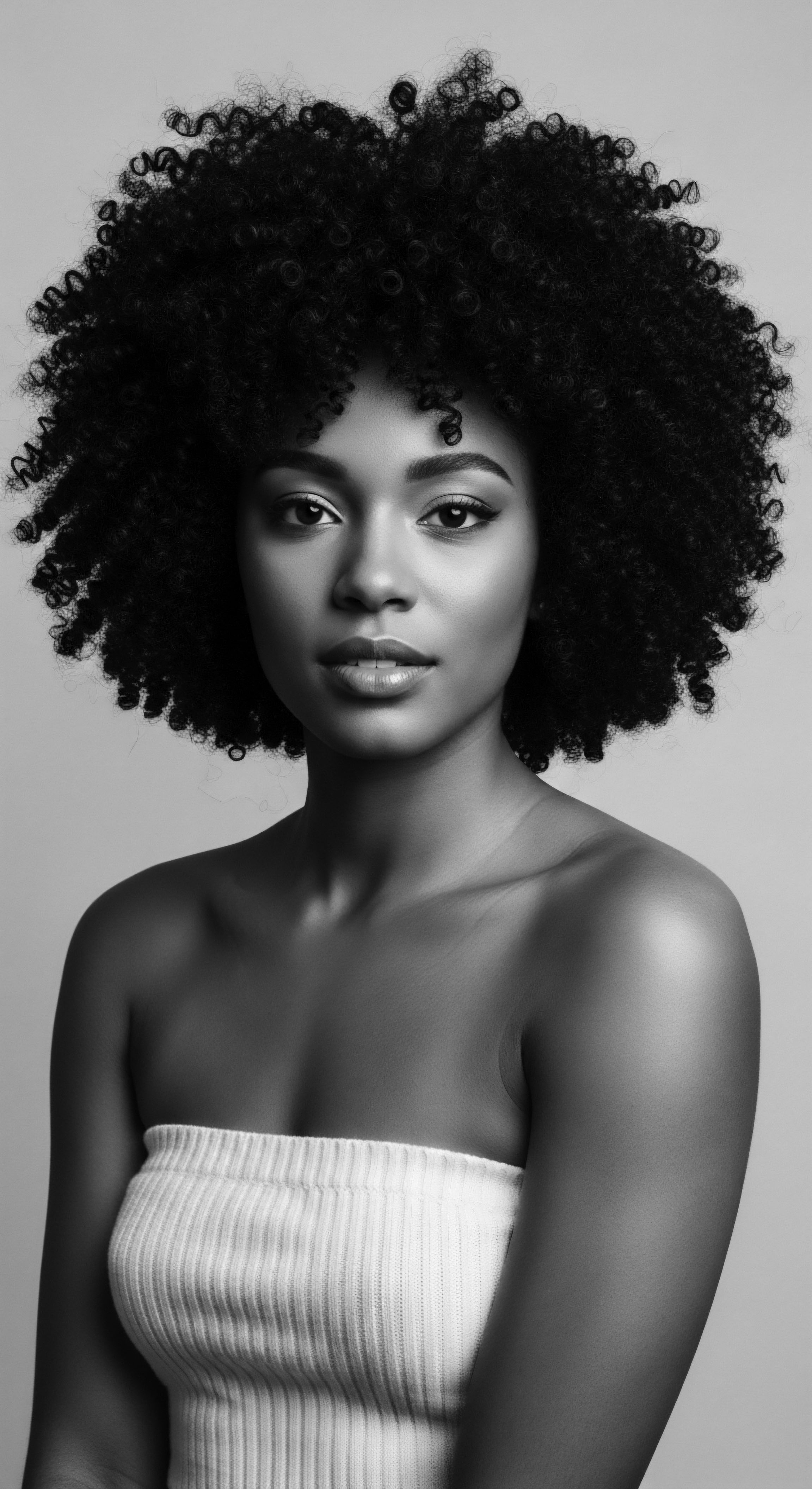
Ritual
The heart of ancient hair care, particularly for textured strands, lay not just in the ingredients, but in the ritual itself. These were not hurried applications but deliberate acts, often communal, steeped in spiritual and cultural meaning. The rhythmic massage, the warming of oils, the communal setting for styling – these components transcended simple grooming, becoming acts of connection, knowledge transfer, and deep protection. The very act of oiling became a tender thread, a practice that fortified not just the hair, but also the spirit and communal bonds.
Can ancient hair oiling rituals truly shield textured strands from environmental challenges? The answer lies in observing how these practices were interwoven with daily existence, forming a robust defense against nature’s forces. Modern science now validates many of these traditional methods, explaining the mechanisms behind their protective qualities. The lipid barriers formed by oils, their antioxidant content, and their ability to seal moisture provide a compelling scientific basis for practices generations understood through direct experience.

Protective Styling as Heritage Shield
Protective styling, a hallmark of textured hair care, finds its roots deeply embedded in ancestral practices. Styles like Braids, Twists, and Cornrows, tracing back thousands of years in African societies, were not solely decorative. They served practical purposes, minimizing manipulation, preventing tangles, and shielding the delicate ends of hair from direct environmental exposure. These styles, often intricately adorned, acted as a physical barrier.
During the transatlantic slave trade, when enslaved Africans were forcibly stripped of their identities, braiding became a symbol of resistance and cultural preservation. It is even speculated that certain braided patterns served as maps for escape routes, with rice seeds sometimes braided into hair for sustenance (Okpalaojiego, 2024).
- Shea Butter ❉ Used for centuries in West Africa to moisturize and protect hair from sun, wind, and dust.
- Palm Kernel Oil ❉ Traditionally applied in West African communities for scalp nourishment and to promote healthy hair growth.
- Coconut Oil ❉ A staple in hair care across tropical regions, including parts of Africa and South Asia, known for deep conditioning and protein retention.
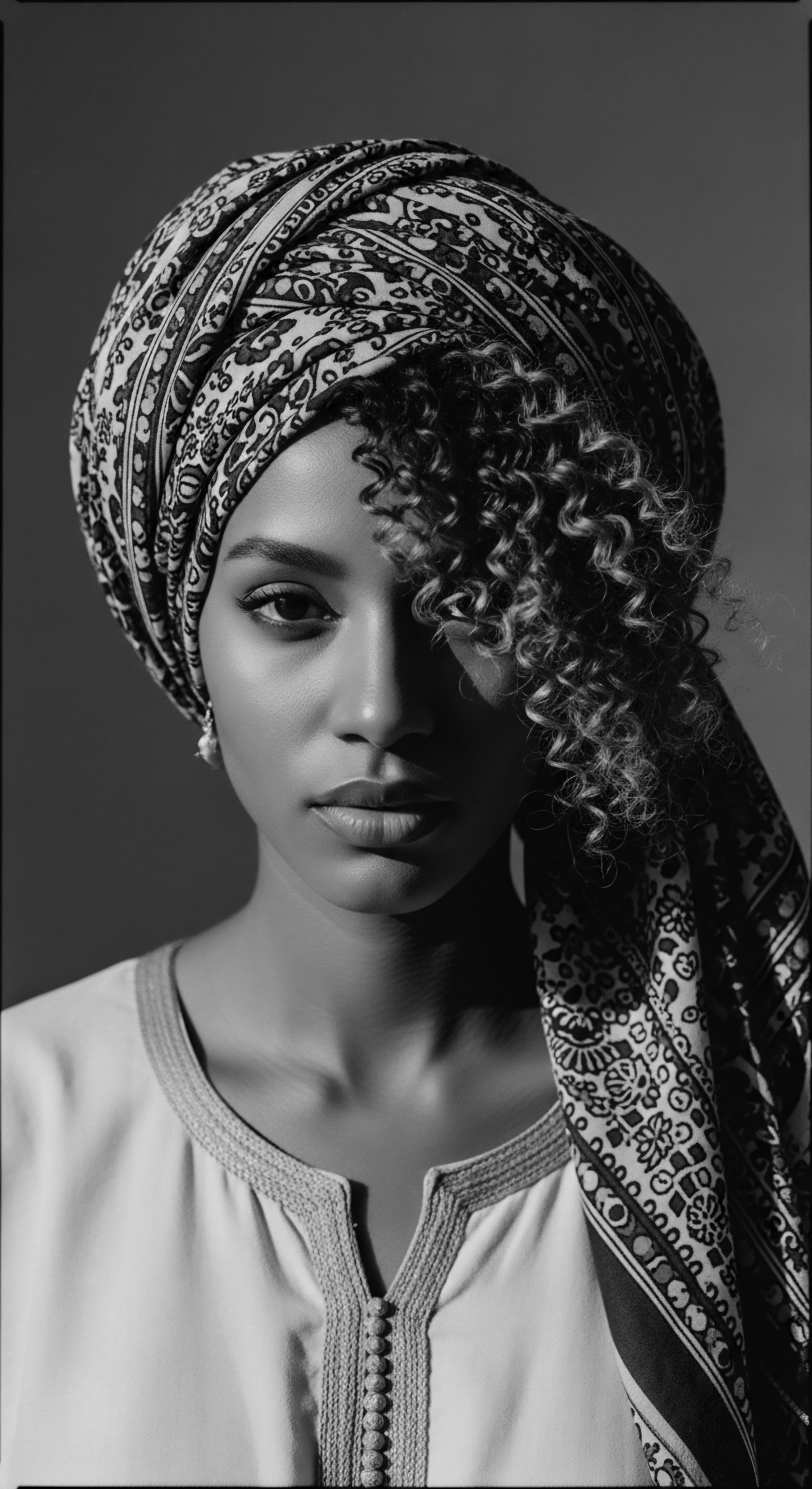
Traditional Methods of Care and Definition
The application of oils was often part of a wider regimen that included natural cleansers and specific styling techniques. In West Africa, the black palm kernel oil was used for skin and hair care, an indispensable ingredient for newborns (World Rainforest Movement, 2015). This speaks to an early recognition of its gentle yet protective qualities. These oils helped to define natural curl patterns, reducing frizz and adding luster, particularly important in regions with high humidity.
How did ancestral oiling methods contribute to resilience against environmental damage? The consistent application of these natural emollients created a protective layer on the hair shaft. This layer acted as a physical barrier against particulate pollutants and UV radiation, both known to degrade hair proteins and strip moisture (CURLiD, 2023). For textured hair, which naturally possesses a more open cuticle due to its coiled structure, this barrier was, and remains, particularly beneficial in retaining moisture and mitigating damage from drying winds and sun exposure.
Ancient oiling practices, often communal and spiritually rich, formed a deliberate shield for textured hair.

The Enduring Value of Ancestral Tools
The tools of ancestral hair care, though simple, were profoundly effective. Combs and picks, often crafted from wood or bone, were used to detangle and distribute oils gently. These were not mass-produced implements but extensions of skilled hands, used with patience and a deep understanding of textured hair’s delicate nature.
For generations, the knowledge of how to prepare and apply these oils was passed down. In Kerala, India, oiling hair is a deeply ingrained practice, with families often preparing their own blends of coconut oil, amla, and hibiscus, tailored to specific hair needs (Vydoorya, 2024). This bespoke approach, rooted in family traditions, ensured a highly personalized and effective care system.
| Environmental Challenge UV Radiation |
| Traditional Oiling Response (Heritage) Application of shea butter, red palm oil to protect from sun. |
| Modern Scientific Validation Some oils contain cinnamic acid, offering mild natural SPF; create a physical barrier. |
| Environmental Challenge Humidity |
| Traditional Oiling Response (Heritage) Oils to seal moisture and prevent frizz, often paired with protective styles. |
| Modern Scientific Validation Oils reduce moisture absorption by the hair shaft, stabilizing hydrogen bonds, reducing frizz. |
| Environmental Challenge Pollution |
| Traditional Oiling Response (Heritage) Consistent oiling and cleansing with natural soaps to remove buildup. |
| Modern Scientific Validation Oils form a surface barrier against particulate matter; regular cleansing removes pollutants. |
| Environmental Challenge Dryness/Brittleness |
| Traditional Oiling Response (Heritage) Deep conditioning with rich oils like coconut, castor, palm kernel for strength. |
| Modern Scientific Validation Oils penetrate hair shaft, reduce protein loss, provide lipids for flexibility and strength. |
| Environmental Challenge The intuitive wisdom of ancestral practices for environmental defense is consistently supported by contemporary scientific findings. |
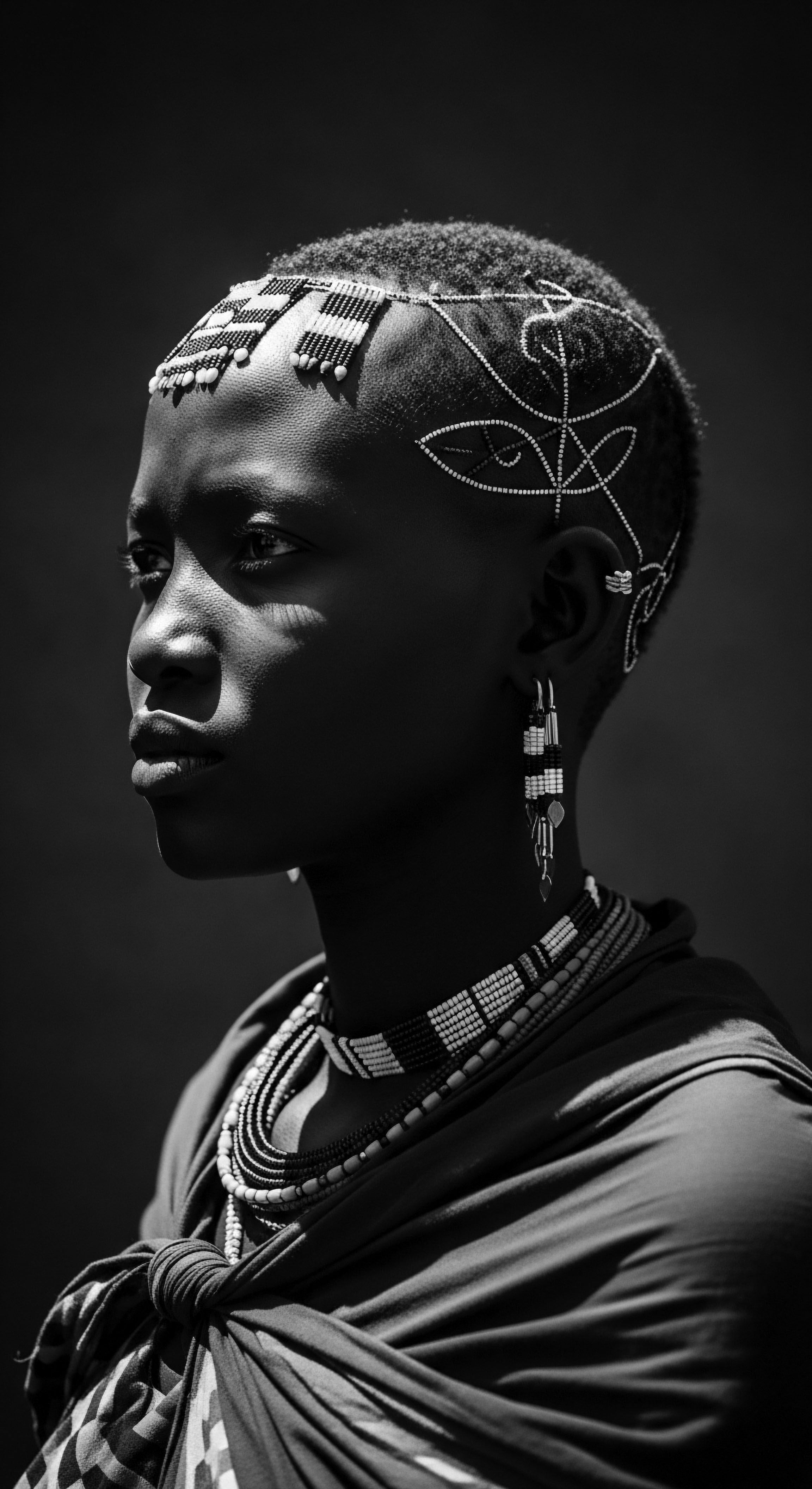
Relay
Our contemplation of ancient hair oiling rituals and their capacity to shield textured strands from environmental challenges extends into a more advanced understanding, where cultural intelligence intertwines with contemporary research. The enduring relevance of these practices, passed through generations, speaks to a wisdom that transcends mere anecdote; it is a meticulously preserved heritage, now illuminated by scientific scrutiny. The question shifts from a simple yes or no to an exploration of the profound ‘how’ and ‘why’ these ancestral methods continue to serve us.
The interplay of specific oil compounds with hair’s unique structure, particularly textured hair, reveals a sophisticated, almost prescient understanding on the part of our ancestors. The very elements that threaten hair – intense sun, airborne pollutants, fluctuating humidity, and mechanical stressors – were met with a defense system rooted in botanical knowledge and a deep respect for the strand’s innate needs.

Holistic Care from Ancestral Wellness
The regimen of radiance, in ancestral contexts, was never fragmented. Hair health was understood as a reflection of overall well-being, intrinsically linked to diet, spiritual harmony, and communal practices. The application of oils was often accompanied by scalp massage, a practice known as Shiro Abhyanga in Ayurvedic traditions, which stimulates blood circulation and nutrient delivery to the hair follicles (YouNeek Pro Science, 2024). This holistic approach ensured that the hair was nourished from within and protected from without.
Can these heritage practices offer a comprehensive shield against modern environmental threats? Pollutants, for example, which include particulate matter and toxins, can settle on hair, compromising its texture and luster. Traditional cleansing methods, such as those using African black soap, derived from plantain skins and palm leaves, cleanse without stripping natural oils, offering an initial defense. Coupled with the protective barrier formed by natural oils, this dual approach forms a formidable shield.
- African Black Soap ❉ A traditional West African cleanser, rich in antioxidants and minerals, used to purify the scalp without stripping natural oils.
- Rooibos Tea ❉ From South Africa, this tea has antimicrobial and antioxidant properties, aiding healthy hair growth when used as a rinse.
- Amla (Indian Gooseberry) ❉ A staple in Ayurvedic hair care, packed with Vitamin C and antioxidants to promote growth and scalp health.
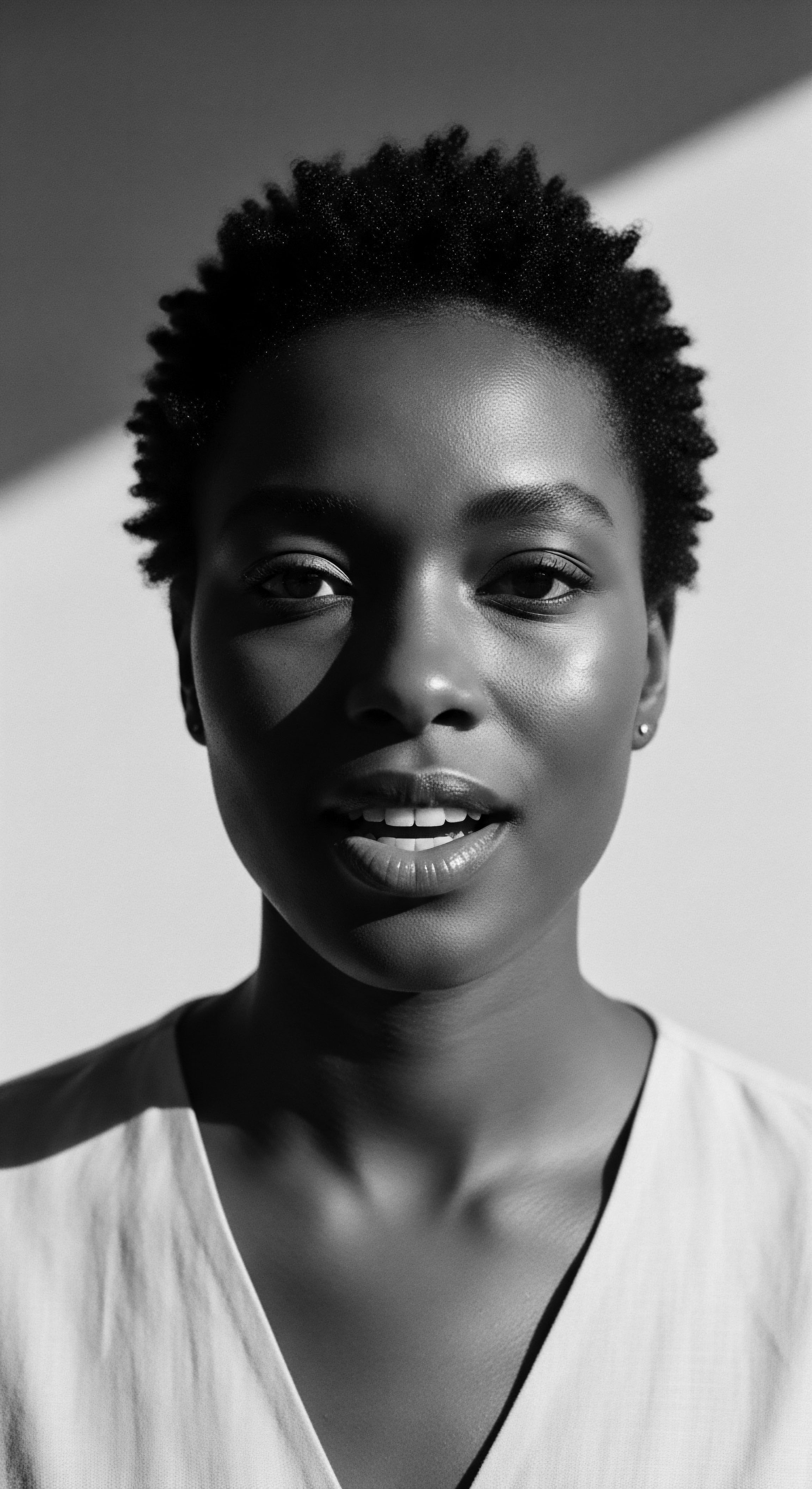
The Nighttime Sanctuary and Bonnet Wisdom
The foresight of ancestral care extended to nighttime rituals, recognizing the vulnerability of hair during sleep. While the modern world cherishes the Silk Bonnet, its conceptual lineage traces back to practices of wrapping hair with soft cloths, preserving moisture and preventing tangles against harsh sleeping surfaces. This protective measure was not merely for convenience; it was a continuation of the day’s defense against moisture loss and breakage, particularly for textured hair prone to dryness.
A significant example of environmental protection through oiling is seen in the practices of the Himba tribe in Namibia. Their distinctive red ochre paste, Otjize, applied to hair and skin, is not solely a cultural symbol but also a practical method to shield from the sun and insects. This paste, composed of butterfat and ochre, underscores how ancestral communities leveraged local resources for comprehensive environmental defense (Bebrų Kosmetika, 2024). This tradition speaks to a deep, inherent knowledge of protective barriers.
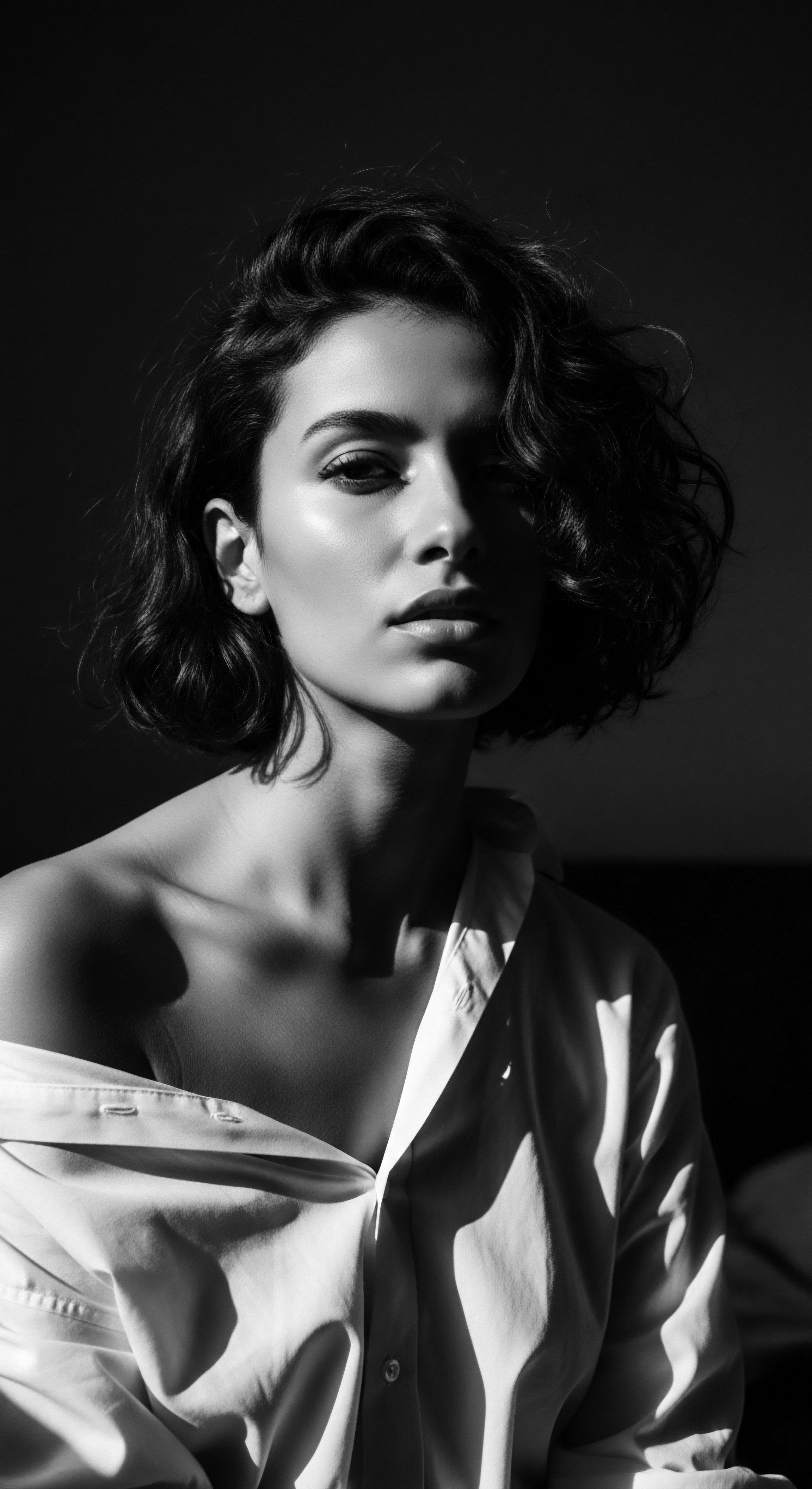
Ingredients for Resilience and Repair
The plant kingdom offered an apothecary of ingredients, each chosen for its specific properties. The distinction between emollients (like shea butter for softening) and sealing oils (like castor oil for creating a barrier) was intuitively understood.
Can traditional ingredients scientifically counter hair challenges?
Yes, indeed. Many traditional oils possess compounds that directly address modern environmental concerns.
- Shea Butter ❉ Rich in vitamins A and E, it acts as a deep moisturizer and offers mild UV protection (approximately SPF-6), shielding hair from sun and wind damage.
- Palm Kernel Oil ❉ Contains lauric acid, vitamins A and E, and essential fatty acids, deeply nourishing the scalp, strengthening follicles, and helping to reduce thinning. It also aids in fighting hair loss and strengthening edges.
- Castor Oil ❉ A cornerstone in ancient Egyptian hair care, known for boosting circulation to the scalp, promoting growth, and sealing moisture.
The benefits of hair oiling include moisture retention, reduction of dryness and frizz, and protection from environmental damage like UV rays and pollution. These oils reduce hair damage by creating a protective barrier, lessening friction and safeguarding against styling tools and environmental aggressors.

The Interplay of Ancestral and Modern Understanding
Understanding the historical uses of these ingredients allows for a more informed approach to modern hair care. It is not about discarding contemporary advances, but rather, about layering them with ancestral wisdom. The scientific community has begun to validate what traditional practitioners have known for centuries ❉ that certain botanical extracts offer tangible benefits for hair resilience. The ethnobotanical studies in Eastern Cameroon, for instance, documented 36 plant species used for cosmetic preparations, with a pharmacognostic analysis revealing diverse phytochemicals like enzymes, minerals, vitamins, and essential oils that contribute to their efficacy in hair treatments.
The connection between our hair, its heritage, and its ability to withstand environmental onslaught is not a mere theoretical concept. It is a living, breathing testament to the ingenuity of ancestors who, with resources at hand and profound observational knowledge, crafted rituals that provided tangible protection. These rituals continue to inspire and inform, demonstrating that the ancient path is often the most enduring and effective one for the textured strand.

Reflection
As we close this dialogue with the past, the echoes of ancestral hair oiling rituals resonate with undeniable power. The question of whether these venerable practices truly shield textured strands from environmental challenges receives a resounding affirmation. This affirmation comes not as a simple yes, but as a rich, layered understanding that deepens with every historical narrative, every scientific validation, and every strand honored. It is a testament to the Soul of a Strand, recognizing hair as a living archive, a repository of wisdom, resilience, and profound cultural heritage.
These rituals, born from a harmony with the natural world and a deep respect for the body, were more than cosmetic applications. They were acts of devotion, community, and self-preservation. From the sun-drenched savannas where shea butter became a golden shield, to the humid coasts where coconut oil offered its protective embrace, textured hair was not simply maintained; it was celebrated and safeguarded through intelligent, intuitive practices. The ancestors understood that true beauty sprang from vitality, and vitality required mindful, consistent care against the world’s varying conditions.
Today, as we confront a world with its own distinct environmental pressures, the lessons of this heritage become even more poignant. The protective layers created by ancient oils, their inherent nutrient density, and the holistic nature of their application offer a timeless blueprint. Our contemporary journey with textured hair is thus a continuation, a relay of knowledge where modern understanding lends language to ancestral truths, and ancestral truths ground us in authentic, effective care. The unbound helix of textured hair remains a potent symbol, carrying forward the legacy of ingenuity, self-worth, and a profound, unbroken connection to roots that stretch back through time.
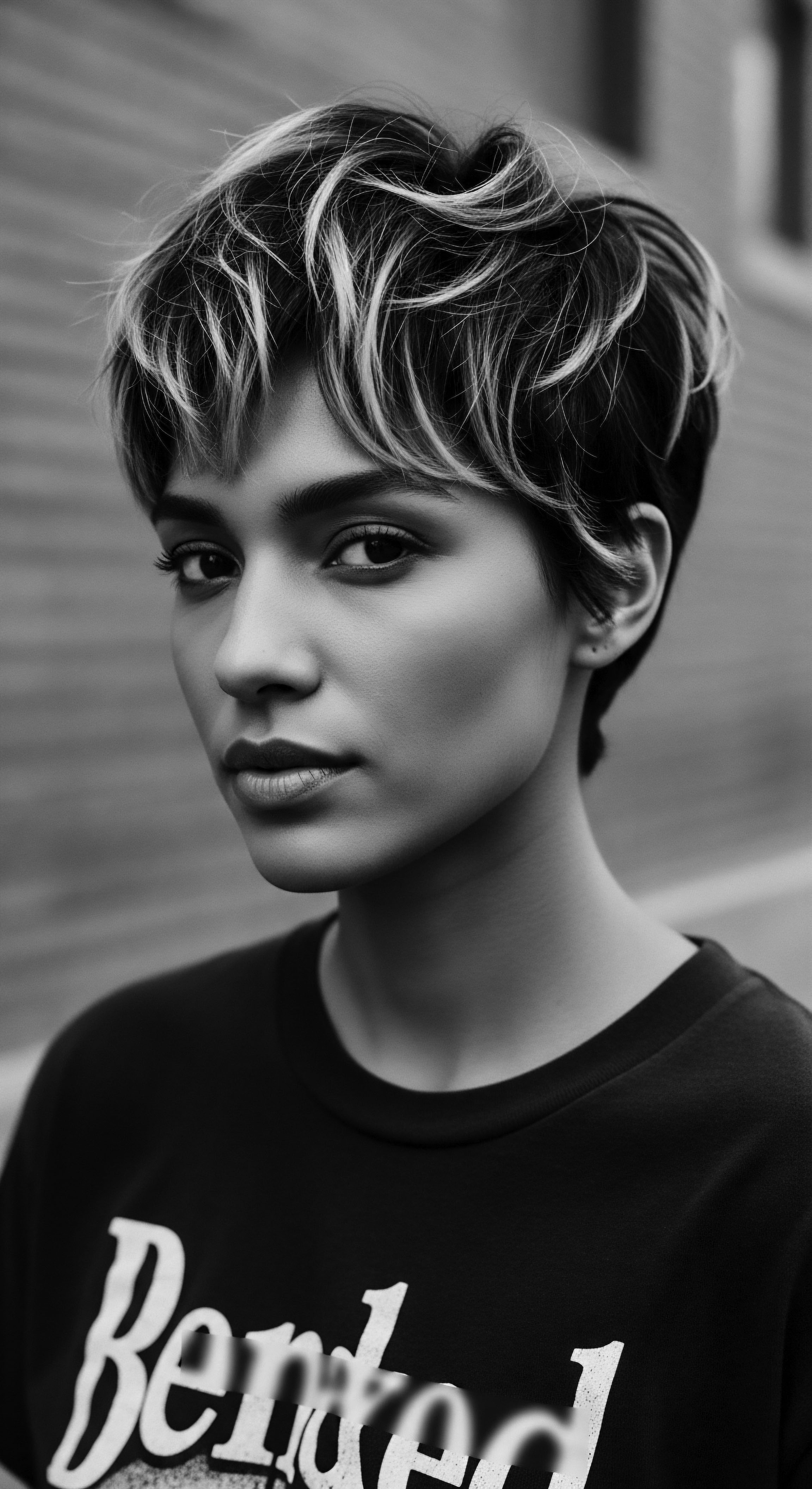
References
- Mbilishaka, T. A. (2018a). PsychoHairapy ❉ The psychology of Black hair and mental health in hair care settings.
- Diop, C. A. (as cited in SheaButter.net, 2024). The History of Shea Butter.
- CURLiD. (2023). How To Protect Your Hair From Environmental Damage.
- World Rainforest Movement. (2015). Africa ❉ Where palm oil is still a source of life.
- Okpalaojiego, J. (2024). The Remarkable History Behind Black Hairstyles. University of Salford Students’ Union.
- YouNeek Pro Science. (2024). Hair Care Rituals ❉ Combining Tradition with Modern Science.
- Vydoorya. (2024). Kerala’s Heritage in a Bottle ❉ The Benefits of Traditional Hair Oils.
- Bebrų Kosmetika. (2024). The Power of Hair in African Folklore ❉ Rituals and Traditions.
- Clinikally. (2024). Reviving Ancient Hair Rituals ❉ Exploring the Therapeutic Art of Hair-Oiling.
- Africa Imports. (n.d.). Traditional African Secrets For Long And Healthy Hair.
- Fluent Health. (2024). Slick, Smooth, and Stunning Hair ❉ Lock in the Love with Coconut Oil.
- Clinikally. (2024). Reviving Ancient Hair Rituals ❉ Exploring the Therapeutic Art of Hair-Oiling.
- Lira Clinical. (n.d.). Modern Beauty from the Ancient Egyptian Empire.
- Project Hairway. (n.d.). How Environmental Factors Impact Your Hair and How to Protect It.
- Ethnobotany Research and Applications. (2025). Plants used for hair and skin health care by local communities of Afar, Northeastern Ethiopia.
